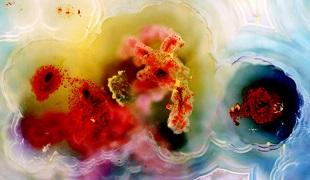The analysis of rock and minerals is important both academically, for geological and earth sciences, and industrially, in oil and mineral-related industries. Academically, the techniques are applied to advance the understanding of what is happening to the earth, to date rock, mineral and microfossil samples and for mineral typing. Industrially, mineral analysis is applied in oil production and in the manufacture of common materials such as glass.
The major techniques used are bright-field, fluorescence stereomicroscopy and polarization microscopy for the analysis of minerals, ores and concrete. These techniques make it possible to compare sound and defective concrete, aggregates, dimension stone, metalliferous ores, and industrial minerals, typically prepared as polished thin sections.
Epi-illumination can be used to study sulphide and oxide ores, while UV is ideal for studying concrete sections impregnated with fluorescent dye in order to determine the capillary porosity of the cement paste and, from this, deduce the water/cement ratio in the concrete. Using this information with modal data (proportions of aggregate, sand, binder and voids) it is possible to estimate the mix design of the concrete.
Key instruments include: Eclipse 50i pol, LV100 pol, LV-series and Stereomicroscopes
Key techniques and terms include: brightfield microscopy, fluorescence, polarization, diascopic and episcopic illumination.

